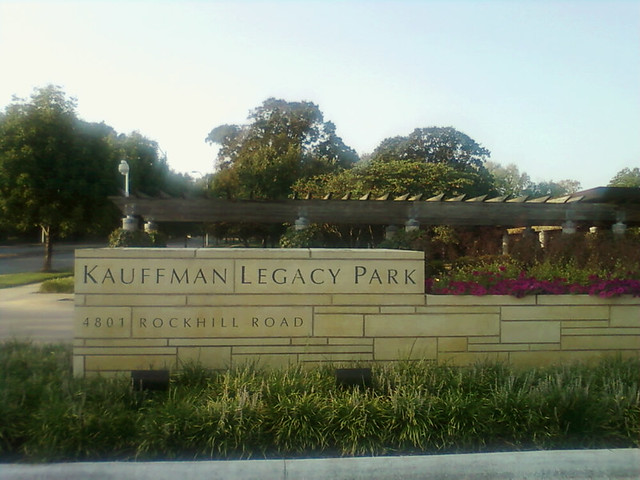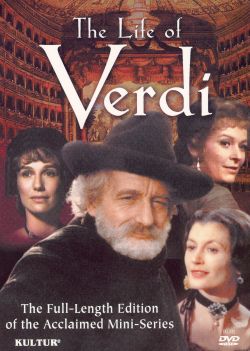 My jazzy friend branched out to opera this month. She invited me to attend a lecture in the ‘At Ease with Opera‘ series sponsored by the Kansas City Lyric Opera Guild. I accepted her invitation, even though it meant driving back on a Monday evening to within sight (a couple of blocks) of where I had just spent eight or nine hours at work.
My jazzy friend branched out to opera this month. She invited me to attend a lecture in the ‘At Ease with Opera‘ series sponsored by the Kansas City Lyric Opera Guild. I accepted her invitation, even though it meant driving back on a Monday evening to within sight (a couple of blocks) of where I had just spent eight or nine hours at work.
Monday, August 27 at 7:00 p.m. University of Kansas film professor John Tibbetts, a longtime classical music and opera enthusiast, will present “Backstage at the Opera: Opera at the Movies.” Tibbetts has made a study of operas as portrayed in film, and backstage scenes and opera intrigues as presented in movies. His presentation will feature excerpts from several such films, with commentary and discussion.
 I attended a different lecture presented by the same man earlier in the year, prior to the release of John Carter, on Edgar Rice Burroughs. I did learn something new about him at his “Backstage at the Opera” lecture, specifically that he was previously a radio announcer on a former radio station (KXTR) in Kansas City. He also mentioned, somewhat in passing, one of his books entitled Composers in the Movies, where he “surveys different styles and periods from the Hollywood of the 1920s and 1930s to the international cinema of today, exploring the role that film biographies play in our understanding of history and culture.” I couldn’t find a copy available at a local public library, but both KU and UMKC have copies listed as available via WorldCat, which I could probably request via InterLibrary Loan. Not sure I’ll take this research that far at this point.
I attended a different lecture presented by the same man earlier in the year, prior to the release of John Carter, on Edgar Rice Burroughs. I did learn something new about him at his “Backstage at the Opera” lecture, specifically that he was previously a radio announcer on a former radio station (KXTR) in Kansas City. He also mentioned, somewhat in passing, one of his books entitled Composers in the Movies, where he “surveys different styles and periods from the Hollywood of the 1920s and 1930s to the international cinema of today, exploring the role that film biographies play in our understanding of history and culture.” I couldn’t find a copy available at a local public library, but both KU and UMKC have copies listed as available via WorldCat, which I could probably request via InterLibrary Loan. Not sure I’ll take this research that far at this point.
Tibbetts provided a few examples of operas popping up in films, including:
- Risë Stevens singing an aria from Carmen in the Bing Crosby classic Going My Way (1944). Much to my surprise, Stevens is still alive! And she was born on June 11, 1913, making her 99 years old and still ticking. “For over two decades (until 1961) Stevens was the Met’s leading mezzo-soprano and the only mezzo to command the top billing (and commensurate fees) normally awarded only to star sopranos and tenors.” There must be something to June babies and mezzo sopranos.
- During the cemetery scene in Driving Miss Daisy, the soundtrack plays a popular aria, “Song to the Moon,” from Dvorak’s Rusalka, a Czech opera.
- A key moment in the Shawshank Redemption features the “Letter Duet” from Mozart’s The Marriage of Figaro.
 Tibbetts next played several excerpts from movies that featured backstage moments for various operas.
Tibbetts next played several excerpts from movies that featured backstage moments for various operas.
He began with several clips from The Life of Verdi, a twelve hour mini-series which originally aired in 1982. These scenes portrayed the power of Verdi’s compositions and how they were used in support of il Risorgimento (Italian Unification). Often the subtext of the opera emphasized the nationalist desire to get rid of their Austrian oppressors. The opera Atilla sparked the flame of national pride and caused a near revolution to start in Milan.
Tibbetts also showed us the sarcastic side of Verdi as he rebuts the censors changes to his Masked Ball libretto. And finally the obsession of Verdi later in life not only as a composer but as a director of his operas while rehearsing Otello.
Tibbetts put Verdi to rest and took us forward to the 20th century, the 1930s, and the fabulous baritone Lawrence Tibbett (no relation). He played two clips from the 1935 film Metropolitan (20th Century Fox’s first production following the merger of 20th Century Pictures and Fox Film Corp). The first, a scene featuring the song “On the Road to Mandalay” and the second of “De Glory Road,” a song Tibbett made his own during his legendary career.
[youtube http://www.youtube.com/watch?v=CSzXoVWjEbo?rel=0]
∞∞∞
http://youtu.be/VAd_enTLYUY\
 Tibbetts’ grand finale to his “Backstage at the Opera” came from the movie Topsy Turvy, which he highly recommended both as a film and as a glimpse into all that goes into the making of a stage production. A period piece set at the original premiere of Gilbert and Sullivan’s Mikado in 1885. He selected scenes 27, 30 and 37 from the DVD. Those three scenes intrigued me and prompted quite a few laughs. I may be adding this DVD to my Netflix queue in the near future.
Tibbetts’ grand finale to his “Backstage at the Opera” came from the movie Topsy Turvy, which he highly recommended both as a film and as a glimpse into all that goes into the making of a stage production. A period piece set at the original premiere of Gilbert and Sullivan’s Mikado in 1885. He selected scenes 27, 30 and 37 from the DVD. Those three scenes intrigued me and prompted quite a few laughs. I may be adding this DVD to my Netflix queue in the near future.
Not surprisingly, the Lyric Opera of Kansas City will end it’s 2012-13 season with the side-splitting comedic masterpiece Mikado next April.
He concluded his lecture with a plug for the October 15th installment called “What’s Opera, Doc?”
Monday, October 15 at 7:00 p.m. ~ “What’s Opera, Doc?” by Dr. Charles Gibbs, a local opera fan. Those of a certain age remember the classic 1950s opera take-off Warner Brothers cartoons featuring Bugs Bunny and similar characters. If you remember the cartoons you will enjoy this program, and if the cartoons are new to you then you are in for a real treat. Dr. Gibbs will show the cartoons, with introductions and commentary. See if you can spot all of the opera tunes and references!


